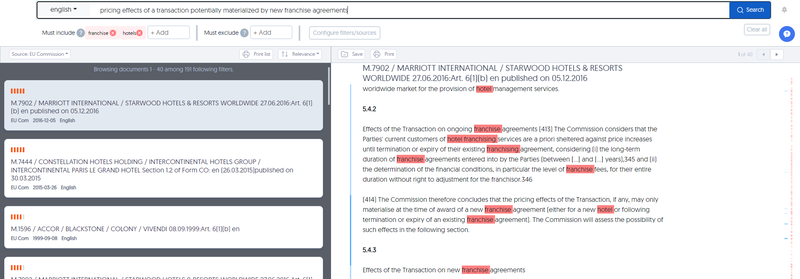The best of two approaches to optimize your search experience
Traditionally, keyword search has been the way to search for information in various databases or even on the Internet. Most of the time, it was sufficient to find what you were looking for, but sometimes and for less straightforward searches, it led to some frustration and too much time spent in front of the search engine. Even though boolean operators are helping users to better precise what they are looking for, one key drawback of this approach is that critical information might remain hidden if you don’t pick the right words. This drawback can be bypassed with contextual search (also known as semantic search).
Indeed, a contextual search will help determine the intent and the contextual meaning of the words a person is using for search or in other words, it aims to know why users are searching for these particular keywords, and what they intend to do with the information they will get.
"The end goal is the establishment of connections between the search query, the words related and the content in the database"
Our natural language processing (NLP) algorithms seek to understand natural language the way a human would. Concretely, they will apprehend what the search query means beyond a literal translation and will display results that are related to the identified context. Not only do they understand words, they also understand the relationships between these words. The end goal is the establishment of connections between the search query, the words related and the content in the database.
Therefore, it helps browse more complete results by understanding almost exactly what users are trying to search, instead of finding keywords in pages. And consequently it helps users to get to the relevant information faster.
In 2019, BERT was released by Google and according to Google, this represented the most significant leap forward in the past five years and one of the greatest in search history. Concretely, it allowed working in natural language, with longer queries and phrases with more than three words to ensure content addresses users’ questions.
At EisphorIA, we are proposing the contextual approach built on the fundamentals offered by the BERT methodology. That doesn’t mean we forget the classical keywords and boolean operators. We actually believe the ideal search engine combines both and this is what we are proposing with our “must include” and “must exclude'' settings.
Let’s take an example to illustrate this:
- Let’s assume we are interested in finding EC merger decision(s) that deal(s) with pricing effects of a transaction potentially materialized by new franchise agreements. Let’s phrase our request as such: “pricing effects of a transaction potentially materialized by new franchise agreements''. EisphorIA will perform a contextual search and identify all documents containing passages of text developing similar context to the investigation inside the EC merger decisions
- Surely interesting but from there, if we want, we can easily narrow down the results further, for instance, by looking at a specific sector and/or a specific terminology. Hence, if we put “franchise” and “hotel” as “must include”, the system will only list documents developing the same context and including the sector “hotel” and the terminology “franchise”.

We clearly see that with very limited iterations, we find directly all relevant decisions, of course classified under the relevance criteria. A simple example of the power resulting from the association of contextual approach and targeting operators.

